Thursday, December 29, 2005



Three photos from down in Kandahar. Firstly, from the archives, a picture of a pot taken from Kandahar and now on display in the British Museum, London. Secondly Ismaray Khan (his first name means 'lion' in Pashtu) who cooked for me and stayed with me most of the time while my host was out working. Really kind and genuine guy. I'll miss his company and jokes. On my last night in Kandahar we watched a favourite film of mine together, The Family Man, as I explained in half-Farsi half-Pashtu what was going on. Good times. Third photo is a usual evening meal. Big slabs of traditional Afghan bread, always a pleasure, as well as a plate of cucumber/tomatoes and mint leaves. Then some cooked vegetables in a sauce. Not super typical as an Afghan meal, but it's what I normally have down south.
Letters from Martha
I rip the envelope and I'm in Bangkok.
I rip the envelope and I'm in Varansi
Allahabad Agra Delhi.
Christmas Greetings from the Kathmandu Hotel.
I rip the envelope:
My kitchen reeks with saffron,
I'm in a smelly passage crowded with sari'd throngs,
Rickshaws, market stalls.
You're at my table, eyes alive with wild boars,
"skinny tea wallahs" carrying clay cups,
Streets parting in the wake of a cow,
Its cud a cardboard box soggy from vegetables.
I'm sorting your letters,
Trying to keep the chronology,
The terrain of your marriage - in one letter
"better than ever, I'm in love all over again"
In another, "torn between distance and desire."
In Rajasthan you're reading a letter from your mother,
A childhood friend getting married, a sister leaving home.
And you, in love with a place.
You hate to leave Nagaur
Where they came from all corners of India,
Exodus of camels to a cattle fair.
You describe slums decaying
In twilight the colours of silks.
Hating to leave Nagaur, torn between distance and desire.
I rip the blue envelope and hear the jangle of bracelets,
I'm trying to find whose wrist they belong to in the gaudy market,
The flashy sunlight,
And there, your Western face and red hair
Above that Indian river.
You pour from these squares, these blue envoys.
And just when I feel I've lost you in the world,
I can't keep up,
Your postcard comes with the words"wait for me."
(Anne Michaels)
(John Gray, Al Qaeda and what it means to be modern)
I write from Kandahar: the heart of the original Taliban movement, and a city almost exclusively dominated by Pashtuns, the tribal peoples of southern Afghanistan and border-land Pakistan. I've little historical information or cultural stories to offer this time round, as during my stay here have observed how neo-Taliban/Al Qaeda groups/loyalists have regained control of huge swathes of the south and east of the country. An extremely worrying development. UK and Dutch governments should take note as they prepare to deploy troops to replace a 3000-troop reduction announced by Rumsfeld recently. For me extremely worrying as it's increasingly difficult to travel safely down south. In the past I've been able to confidently travel down here on the roads; if you make sure to travel only during daylight, I reasoned, you'll be fine. It isn't enough these days.
On the road from Herat to Kandahar, a ten-hour blur of dust and shitty roads, informal checkpoints have sprung up. Government check-points are manned occasionally by black-masked troops [see Robert Fisk's reports for The Independent on similar trends in Baghdad]. Several times we were asked to get out of the car for a search. A small bribe (around 10p or so) bypassed this, thus completely negating the point of the checkpoints. Welcome to Kandahar.
In terms of general security in the south, I've been advised by various sources that large sections are no-go zones for foreigners and Afghans alike. Helmand province, where I stopped for lunch on the way here, is split in two by the Herat-Kandahar highway. North of the road, Taliban are in control, and government and US forces cannot go there. Uruzgan is also tremendously risky: just watch the faces of my Afghan friends ripple into concern when I mention that I want to go there. Similarly parts of Paktia, where I'll be next week. I could go on with more names etc, but little use for the non-specialist. Suffice to say that the south is a much more dangerous place than it was 5 months ago.
Normally the winter heralds a lull in fighting, as fighters lose their mobility on account of snow and resultant conditions. From all sides, though, I'm hearing that the fighters have remained in their positions over the winter. A brief selection of activities down south should suffice as proof:
3rd December - US helicopter downed in southern Afghanistan
14th December - suicide bomber in courtyard of shrine/mosque in Mazar-e Sharif (first time); suicide (donkey) bomb in Faizabad (Badakhshan).
15th December - Another member of Ulema Council killed (6th in 5 months) in Kandahar city; US soldier killed Kandahar City; Taliban execution of teacher in Helmand
16th December - suicide bomb next to Parliament building in Kabul; riot in Lowgar
17th December - riot south of Kabul; attack on school in main city of Helmand province
18th December - 30 Taliban attack checkpoint just outside Kandahar city
20th December - Herat's first/second suicide bomb
22nd December - attack on vehicle convoy in Nangarhar province
24th December - explosion in Maiwand; rocket attack on Kabul
25th December - 3 kidnapped in Farah (normally relatively calm province); Zawahiri broadcasts tape claiming [largely correctly, I might add] Taliban have regained control over large parts of Afghanistan
Anyway, this doesn't cover a whole bunch of smaller attacks on teachers/students, burnings of schools, or banditry on the road (quite common). Indeed, I learned that a landmine IED (like those used in Iraq) was placed (and duly detonated) on the roadside of the Herat-Kandahar highway only the day after I travelled down it.
There is also a 'silent war' being fought in Uruzgan province. This is silent only because it is suicidal to go there to report. Even Afghans cannot safely do so. US forces are resorting to a combination of artillery bombardment and air bombing - again just as they are resorting to in Iraq [see recent article for New Yorker by Seymour Hersh on this strategy]. The extent of the loss of control is not being reported. Woe betide the British and Dutch forces when they come here all "committed" (as one NATO commander commented recently) to "ending" the insurgency and ending the opium business. Hubris on a grand scale if ever I saw it...
I've been extremely busy down here. I don't have the energy or time to write it all up here, and in any case a large portion of it will be worked into my book. On that count, it's extremely interesting. Tonight, the head of the Qadiri Sufi order (the subject of my book) has invited me to his house for zikr. I visited the Canadian military PRT, soldiers of which have been redeployed from "somewhere in the south" [i.e. searching for Bin Laden and Mullah Omar]. I met with the two main organisations working with women's issues within Kandahar city. I met the minister of education here in south. I visited Kandahar university and talked with the chancellor. (Incidentally, I will write a longer piece solely on the University facilities throughout Afghanistan, which troubles me the more I learn). I visited more orthopaedic centres for landmine victims.
As regards universities in Kandahar, the campus has moved to next to the Mullah Omar's Id-Gah mosque. It's really so far out of the way, that students have difficulty getting in. 1100 students in total, most of whom are medicine students. Out of this 1100 there are 30 women registered, but I've been informed by others that there are actually only 8 women actually studying there. There is a whole dormitory (out of seven) for girls, but obviously few takers. Security for the students is a problem, as a wall around the campus hasn't yet been built. A lack of professors and/or the professors' lack of training is similarly an issue. The library is in a similarly shoddy condition to that of Herat [see last email].
There are two organisations that seem to be doing the most for women's issues: the Afghan Women's Centre (part of the government Ministry for Women's Affairs) (AWC) and a US-born NGO called Afghans for Civil Society (ACS). Both have a different approach to the situation of women's rights. AWC is a small operation at the moment, offering some computer and English classes (for free) to women, as well as operating a handicraft workshop. They hope to offer a library in the near future, as well as expand their programmes. ACS, on the other hand, seems actively engaging with the society in a pragmatic step-by-step approach which seems eminently suited to the conservative society. I'll write more about these two organisations in a different email about women in Afghanistan.
In terms of elections and local politics, different things have emerged. In the recent elections, the Karzai family did well, as well as the communists, as well as the 'usual suspects' of drug- and warlords. To a large extent this has politically legitimised the people America is at the same time fighting against in the south.
As far as my book goes, I met the effective head of the Qadiri order in Kandahar on Tuesday night, and am due to meet with the real leader in a week sometime. Every Thursday night I witness zikr (subject of my book, a kind of religious ceremony with dance) in a different part of the country. Tomorrow it'll be Kabul, and next week with Kuchi nomads in Khost. Then finally in Mazar-e Sharif a few days before I leave the country for Pakistan. Many people wish to help me with my book, and the people I talk to are saying much of interest. Watch this space...
I arrived in Kabul a few hours ago from Kandahar. Amazing that there isn't any snow on the way. A journey that took my 23 hours last December now only took 5. And the weather throughout the journey was really pleasant. Only here in Kabul the combination of the bone-penetrating cold (-13 celcius forecast tonight) and the altitude (approx. 1800 metres above sea-level) has given me a migraine. I'm staying in Kabul for zikr and leaving for Khost in the east of the country early on Friday morning. Happy new year to all in anticipation...
In war, you experience all sorts of horrible things, and, to be strictly honest, some marvellous things as well, above all in the personal generosity of strangers that comes as close to fulfilling the Christian notion of grace as anything this vertebral nonbeliever has ever encountered. But learn anything worth communicating? Only if seeing people die, in your arms, at your feet, by your side, within your sight, while all the while there is absolutely nothing you can do to save them or rescue them, constitutes learning. And it does not. It's just death and suffering in all their infinite variety, clogging one's nostrils and taking over one's brain until one doesn't know whether to dream of justice or flight, or simply of being somewhere else, where there is silence when you crave it, noise only when you need it, light, heat, comfortable beds, and cold glasses of good white wine.
David Rieff, A Bed for the Night
"Now I lodge in the cabbage patches
Of the important...
Not much sleep under strange roofs
With my life far away..."
(Osip Mandelstam)
My cup's the same sand colour as bread.
Rain's the colour of a building across the street,
It's torn red dahlias
And ruined a book propped on the sill.
Rain articulates the skins of everything,
Pink of bricks from the fire they baked in,
Lizard green leaves,
The wrinkled tongues of pine cones.
It's accurate the way we never are,
Bringing out what's best
Without changing a thing.
Rain that makes beds damp,
Our room a cave in the morning,
A tent in late afternoon,
Ignites the sound of leaves we miss all winter.
The sound that pulled us to bed...
Caught in the undertow of wind in wet leaves.
I'm writing in the sound we woke to,
Curtains breathing into a half-dark room.
I'm up early now, walking.
Remember our walks, horizons like lips
Barely red at dawn,
How kind the distance seemed?
Letters should be written to send news, to say
Send me new, to say
Meet me at the train station.
Not these dry tears, to honour us like a tomb.
I'm ashamed of our separation.
I wake in the middle of night and see "shame"
Written in the air like in a Bible story.
I dreamed my skin was tattooed,
Covered with the words that put me here,
Covered in sores, in quarantine - and you know what?
I was afraid to light the lamp and look.
Your husband's a good builder - I burned
Every house we had, with a few words to start the flames.
Words of wood,
They had no power of their own.
"The important" gave them meaning
And humble with gratitude
They exploded in my face.
Now we're like planets, holding to each other
From a great distance. When the lay down
Oceans flexed their green muscles,
Life got busy in the other hemisphere,
The globe tilted, bowing to our power!
Now we're hundreds of miles apart,
Our short arms keep us lonely,
No one hears what's in my head.
I look old. I'm losing my hair.
Where does lost hair go in this world,
Lost eyesight, lost teeth?
We grow old like rivers, get shrunk and doubled over
Until we can't find the mouth of anything.
It's March, even the birds
Don't know what to do with themselves.
Sometimes I'm certain those who are happy
Know one thing more than us...or one thing less.
The only book I'd write again
Is our bodies closing together.
That's the language that stuns,
Scars, breathes into you.
Naked, we had voices!
I want you to promise
We'll see each other again,
You'll send a letter.
Promise we'll be lost together
In our forest, pale birches of our legs.
I hear your voice now - I know,
Everyone knows promises come from fear.
People don't live past each other,
You're always here with me. Sometimes
I pretend you're in the other room
Until it rains...and then
This is the letter I always write:
The letter I write
When they're keeping me from home.
I smell your supper steaming in the kitchen.
There are paper bags on the table
With their bottoms melted out
By rain and the weight of oranges.
Monday, December 26, 2005
Thursday, December 22, 2005
Notably, Herat had its first 'successful' suicide bomber on Tuesday morning, which wounded 3 Italian ISAF 'soldiers'. I say first successful because apparently (I haven't been able to check/confirm this yet in my archives) there was also a suicide bomber about 4 months ago (near the hotel where I'm staying) against one of the local military leaders (or 'commanders' as they're called here). That attack was related to the election, and rumour has it that the attack was planned by Ismael Khan's men. Also the ISAF forces targeted were part of the so-called PRTs (Provincial Reconstruction Team), whereby the army gets to put a good face on its actions by engaging in the work of NGOs, thus blurring the boundary between NGO and military; this confusion of roles has been much discussed within the NGO community.
At any rate, the suicide bomber is rumoured to be the first of several 'lying in waiting' in Herat. This is bad news for the city, which until now had a reputation (even in those who cared to know in the West) for safety and security. As we've seen also in Mazar-e Sharif, the instability which has nestled deep into the south of the country has spread upwards to previously calm provinces; N.B. on 14th December there was also a suicide bomber near the shrine in Mazar-e Sharif, calculated to injure the larger number of pilgrims that come on Wednesdays.
Change is rippling through Herat too. Of course it's part of returning to Afghanistan (and other 'developing' countries) to see new things. Young people are increasingly wearing 'western' clothes such as trousers and leather jackets. I'm increasingly asked by young people why I'm wearing shalwaar-qamiis [the traditional Afghan clothing, a sort of linen all-day pyjama outfit] when I could wear jeans or trousers. Again, however, S&C is still the norm.
The music people listen to (on the radio, television, or download as ring-tones or as MP3s onto their mobile phones) is moving from traditional styles towards the more popular western-drum-bass standard. This isn't a positive development for Afghan culture. Of course, there are still centres of 'classical' Afghan music, to which Veronica Doubleday and John Bailey both have made testimony.
Mobile phones, as in much of the Middle East, are all the rage. Everywhere I go, people ask me where I bought my phone [an ordinary Samsung] and how much it cost. As I saw in Iran, Afghans who can afford it go through a large number of mobile phones each year just to be 'in'. Needless to say, the large majority of Afghans don't have mobile phones.
Skills Training Centre, the school for English tuition and now I.T. (computer lessons) that I wrote about when I was in Herat last winter, seems to be going from strength to strength. My good friend Haroon continues to man the helm alone. Many of the teachers that I met a year ago are still there. It is generally acknowledged to be the best outside-school school for learning English in Herat, largely on account of the excellent and devoted teachers.
Most of these are former pupils at the school, who now are studying at university and use their teaching job as a way of earning money on the side. Many also have occasional work as interpreters; most, for example, worked as interpreters or assistants to the international monitoring groups that arrived (and duly left) for the various elections here. Roughly speaking, a teacher might earn $100 for three months of work (6 days per week).
New buildings are rising skywards all over town too. Next to my hotel in the centre of town, a merkez-e tejarat, a shiny glass building, has been finished. Also a 5-star hotel a few kilometres outside town was opened to moderate ceremony last week (mirroring the opening of Kabul's 5-star Serena Hotel) recently. My driver and I went past this morning to see the rooms and were refused entry half-way up the driveway. American troops, we were told, were staying there and had instructed no other guests to be admitted...
Also, interestingly, there's are a few new 'malls' in town. Melly Mall ('National mall' in Farsi) is near my hotel too, and is dominated by mobile phone shops (which are all over the rest of town as well). Bemused elder Afghans wander the polished tiles, and a 'bouncer' of sorts mans the doors, much as I've heard happens in Kabul (but hopefully more on that once I go there later in the month). I fear, too, that this isn't necessarily the best step forward for Afghanistan at this time. Instead, I'd suggest it's yet another indicator of the widening gap between rich and poor in the country.
As far as Herat's history is concerned, a few events are worth pointing out:
- Alexander the Great, upon entering Herat in 330BC first adopted Persian dress and customs in order to persuade the peoples of Afghanistan (and Central Asia) that he was a legitimate ruler.
- The initial Muslim conquest of Herat in 652AD was led by the governor of Basra, Abdullah bin Amir [Iraq didn't exist as a state back then]
- This attests to the influence of poetry - during the Samanid dynasty, based in Bukhara, one ruler (Nasr ibn Ahmad) found he liked Herat so much that he didn't want to leave. Each time an opportunity arose, he found some excuse to stay. His army and court, yearning for their own country, paid a poet to write a poem which would 'cure' their leader [the poem still exists]. Indeed, after hearing it, he jumped on a horse immediately, not adjusting his stirrups until he reached Mazar-e Sharif.
- Genghis Khan's nominal ruler in Herat lost the loyalty of the people, and in 1222 Genghis accordingly decided to kill every single member of the large 160,000-strong population. He was apparently quite successful, as only 26 [I think, can't check at the moment] people survived in town, as well as 14 from the outlying villages. These 40 people lived for several months/years [not sure again] in the courtyard of the Friday Mosque, surviving on the food the ghost-town that the massacre had left behind. They stayed that way until Ogodai Qa'an, Genghis' son, decided to rebuild Herat several years later.
The Timurid renaissance, a glorious period of artistic and cultural rebirth at the end of the 14th century, was focused on Herat. Shah Rukh, who moved his throne and capital to Herat in 1404, was the engineer (along with his wife, Gowhar Shad, who played no small role) of the flowering of arts, architecture, painting, learning and literature.
The Friday Mosque itself isn't a product of this period (dating from Ghorid times around 1200) but the intricate tilework that covers it is a direct Timurid addition. It really is something that can't adequately be conveyed in photos (certainly not my mobile-phone shots). Yesterday I sat there for two hours in a state of wonder. It isn't just the variety of colour, the fecundity of invention, the beauty of the patterns. I only left when I lost the feeling in my rear (as the stones of the mosque are ice-cold this time of year).
Similarly, the mausoleum of Gowhar Shad is (or at least was) earth-shatteringly rich in its decoration. Originally a madrassa or religious school, there was later the tomb-building, as well as 30 individually decorated minarets. [See Jason Elliot for a more detailed description]. Robert Byron described it in 1937 as “the most beautiful example of colour in architecture ever devised to the glory of God and himself.” As things happened, though, the musalla complex (as it is otherwise known) was blown up by a British officer [his name was C.E. Yate] during the Pandjeh crisis where, under threat of Russian southward invasion, it was decided that the minarets needed to be demolished in order to give Herat a better chance of defence. The invasion, of course, never took place.
Herat was also home to a large number of poets and Sufi 'mystics'. The poet Jami, the Sufi Ansari, the scholar Mahmud Arifi etc etc. [the list goes on and on]. The saying goes that you couldn't stretch your leg out in Herat without kicking a poet during those Timurid times.
As concerns today, though, education is on the up. Central government statistics confirm that 6.5 million more children are being schooled than during Taliban times. English tuition is, generally speaking, the focus of this education. At the university, the number of enrolments in courses increases year by year, but the number of graduates has stayed stable. I suppose this is similar to the trend in the UK at the moment. Some who were active in Taliban times and who previously resisted education are showing an interest. An uncle of a friend of mine, too, at 70 years old is beginning courses in computing and English (taking his classes alongside 5 and 7 year olds). The government policy seems to be gearing towards private education (i.e. privately financed) - note the new American-sponsored university in Kabul; annual fees of $3000 mean that few can apply. The effectiveness of a policy of private education remains to be seen. My friends have no problem with it per se (as tuition will be better) just so long as fees aren't prohibitively expensive.
I visited the university, bare and unwelcoming even by the standards of my own university in London. There weren't any students as end-of-year exams are about to begin. Each faculty is in a different place. The university administration (whom my good friend Mirwais and I approached to get some figures – to follow as person wasn’t around today) is also in a different location.
Tuition has only recently become mixed-sex, in conformity with the rest of the country. The medical faculty – with a conservative mullah as president – is the last to change. The final year of medicine students are mixed, though, as they said unless they were allowed to study together they would refuse to show up for study. The rest are expected to become mixed at the beginning of next academic year. Ismael Khan’s daughter is studying medicine (two or three years below my friend in the faculty) and rumour has it that the separation is a direct result of his wish to protect his daughter. Rumours, though.
As far as libraries are concerned, my chief point of interest in the university, they are in really poor condition. My friend didn’t even know where his library was. There are a few Farsi books (necessary as most don’t speak English, despite the current drive in the education policy) and a haphazard selection of English books. These are parting ‘gifts’ from NGOs who donate their library (a random assortment of pulp novels and history books) to the university library. Accordingly students must buy their own books for study. Most of these come for Iran, as Afghan translations of medical textbooks, for example, are scarce.
Tuition in the universities is also reportedly poor, with teachers just reading from notes without any knowledge of the subject. My friends (also English teachers) talk of coming back to teach properly at the university once they have graduated and are doctors. Exams are tough, and heavily reliant on rote-learning of detailed descriptions of diseases etc. But as far as I can tell, it’s similar in the UK too, no?
Tourism has yet to take off in Herat in the same way as it has in Kabul (to a certain extent). A fearless few will pop over from Iran, but generally there isn’t a big market; something that the new 5* hotel might hope to counter? In my hotel at the moment, there is an English tourist who has a certain interest in the country. Also a Japanese tour-group (without cameras, but complete with fluent-farsi-speaking guide) who liven up the hotel’s restaurant every evening.
Otherwise, Herat is truly bustling at the moment. Much as I might be tempted to talk of the destruction and poverty of the country, the centre of town really doesn’t feel like that at all.
I’m traveling onwards to Kandahar tomorrow morning. Sufi zikr rite/ceremony tonight at Gazar Gah. Still plan three more articles on Herat: one on Sufism/zikr, one as more ‘free’ intro to Afghanistan, and a piece on bus/taxi travel in Afghanistan.
Wednesday, December 21, 2005








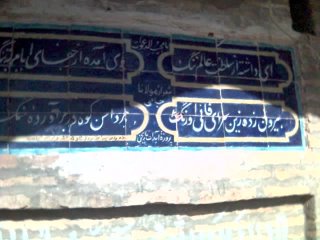

Further images from Herat that I took on my drive around this morning.
- Gazar-Gah, shrine of Khoja Abullahi Ansari, Sufi mystic saint from medieval times, home to many cats (of whom he was fond), and visited by women who hope contact with his tomb will make them pregnant. Popular place for picnics as well. This is also where Sufis meet for zikr on thursday evenings.
- Ismael Khan's son's grave with two friends who were killed alongside him. Ismael Khan was once effective 'king' of Herat, and the people still talk about him with fond memories. For sure, he wasn't all good, but Herat's prosperity and good condition (excellent roads, street lighting etc) are to no small extent due to him.
- same as 2
- Grave of the son of my driver. Farvar, age 5. Killed 7 months ago.
- New 5* hotel just opened in Herat last week. Driver and I were refused entry because apparently American special forces soldiers had taken up residence there and "absolutely nobody" is to be allowed in. Great for business I'm sure...
- View of Herat city from Gazar-Gah
- Ghar Darwisham: old sufi meeting room, no longer used. (all subsequent photos also of this place). To get there you have to walk a couple of kilometres up a hill. Relatively isolated. Really dark inside. Atmospheric place.
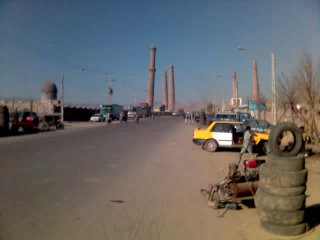
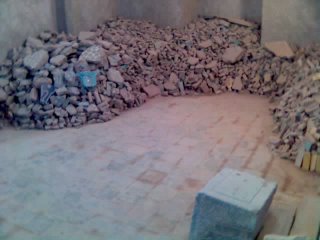
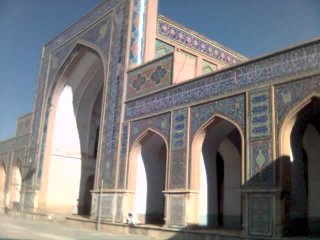


Taking advantage of the good internet connection here to post some pictures of Herat. Text to follow soon hopefully.
- View of minarets of Gowhar Shad (will write more in email about her...)
- Fragments of the minarets that fell down during the annual 'wind-of-40-days-and-nights' that Herat experiences. No sign of reconstruction any time soon...
- Inside of Herat's famous Friday mosque. Stunningly beautiful. Colours don't come out very well. Think a deep turquoise blue instead.
- Same, also from inner courtyard.
- View onto city-centre, one of the roundabouts. View from hotel balcony.
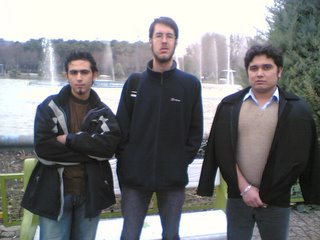


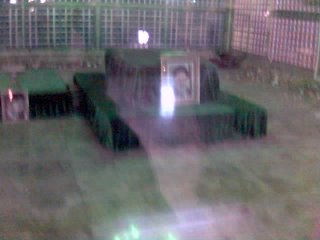




As the first significant stop on my way to Afghanistan, Iran was once-again captivating and a reminder that difference in form doesn't necessarily mean difference in quality. As the Chechen proverb goes: "the dog gave meat to the donkey, and the donkey gave hay to the dog - both went hungry. Every people likes its own customs."
This isn't to say that Iran and her people seek isolation. Quite the opposite. Young Iranians seek out western 'pop culture' in a number of shapes and forms, be it "the disco" in Dubai, trendy western-sounding Iranian pop-stars, the latest mobile phone, or even in dress-sense. Leather jackets, jeans and an 'in' hairstyle all are facets of the well-turned-out youth.
Iran is three times as big as France, and over 70 million people live within her borders. Tehran has about 16m (including outskirts). As of mid-2005 approximately two-thirds live in cities, two-thirds are under 35 years of age, and there are 8m internet users in Iran.
As regards politics, Iran is essentially a theocracy. The secular half of the government consists of an elected president and an elected parliament. It has big responsibilities but little power. The religious half of the government consists of an unelected supreme leader and an unelected guardian council. It has little responsibility but lots of power.
Recent events have kept Iran in the news. Ahmadinejad, the president, claimed that the Jewish holocaust may not have happened; it was, instead, a "myth"; he suggested that Europe should host the Jewish nation. Also smog in Tehran put over 1,600 people into hospital a week before I arrived. Tehran's location is such that the city isn't well ventilated and the systems of surrounding mountains prevent the passage of fresh air. A military plane destined for Bandar Abbas crashed into an apartment block, killing 150+ people. Needless to say, conflict continues to bubble over regarding Iran's nuclear capacities.
I stayed with some Uzbek friends of mine (originally from Afghanistan) in town, and was given a true Afghan welcome there. I stayed for a few days so as to acclimatise myself to the language, culture and temperature - much colder than a balmy twenty-degree Damascus.
First port of call, the Reza Abbasi museum. A special exhibition of 'Microcalligraphy' was on display downstairs. This consisted of trinkets containing pieces of rice with words written on them; here a Hafez poem, there a surah from the Quran. This wasn't so interesting.
Upstairs, some visible glories of old Persian culture were on display: miniatures of the 13th and 14th centuries (pictured). The manuscript illustrations range from the separate leaves from early shah-names to the album studies of the late Savafid period. I had come looking for some pictures of dancing dervishes, such as described by Sa'adi (more about him later). The pictures leap off the page, some even literally cross over the pages frame, possessing a deeply endearing larger-than-life quality. The colours of the illustrations were vividly portrayed in colour too. Many of these miniatures are housed in the US nowadays, and the collection in the museum was relatively small. Also in the museum were historical calligraphy excerpts (from the Quran etc) as well as artistic metalwork.
It was interesting to move then to the Tehran Museum of Contemporary Art (even though most of the collection on display was from the period 1977-79). Lots of paintings, along with a few sculptures. Oddly, there wasn't that much figurative art, and lots of abstract art. This I found especially noteworthy, even though the Iranian friends who accompanied me around the museum were less than excited about art that "anyone [can] do". I found myself hovering around the abstract works, almost to prove a point, even if I didn't particularly care for it.
Outside the museum, we went for a walk in a park. Parks, as far as I'm concerned, are one of the best things about Tehran. You're never far from one, and once inside you can pleasantly forget you're in the middle of a bustling capital city with heavy pollution problems. During my stay I went to three different parks (Lale, Sa'ii, and Jamshidii). Iranians like to walk in the parks at all times of day and night. Last year, after heavy snowfall, I was wandering around Jamshidii park (in a quest for a well-known Kurdish restaurant) at around 10pm only to find many families (and this includes the 4 or 5-year-olds) taking a stroll. Sa'ii park - to make a connection with my last post - even has a skating-rink, which reminded me of that in Central Park, New York. The not-so-sky-scrapers of Tehran cast a bright background. Lots of young people running around etc despite the (relatively) cold weather.
The next morning I took the metro to go see Khomeini. A strange experience partly due to segregation of sexes (not compulsory, as far as I could tell; but there were several special carriages reserved for women). However it was also jarring to travel in an underground rail carriage without any advertisements or posters whatsoever. White from tip-to-toe.
The huge site of Khomeini's grave is located in the south-west of Tehran, adjacent to the behest-e zahra cemetery, named after an epithet of Fatima, the Prophet's daughter and wife to Ali, the first Imam. Inside the mausoleum, there were forty-odd girls "praying" (as one man told me) or otherwise undergoing religious study. Khomeini's green-glass tomb-house was filled with money from well-wishers (or just simply wishers). The massive complex is still under construction, and has several domes and minarets. A shopping mall of sorts also surrounds the mosque.
The large cemetery near-by (Behest-e Zahra) is famous for two things: as a place of interment for soldiers who fought in the Iran-Iraq war, and as a cemetery for the revolutionary movement against the Pahlevi regime; many of those killed in the 1978 demonstrations were buried here (after the September 8th 1978 demonstration, over 4290 burial certificates were issued for this site). No wonder then, that this was the place Khomeini chose for his first public speech six months later. The central fountain once ran with blood-red coloured water to symbolise the loss of Iran during the Iran-Iraq war. Wandering around the cramped burial quarters, the faces of many young men stared out, as if to challenge me.
I spent an enjoyable couple of hours then wandering in the old bazaar of Tehran, and eating 'traditional' Persian food in an old restaurant with Behrouz and Miilat, my Iranian-Afghan-Uzbek friends and hosts. All that was left was for me to find a farsi-language copy of Sa'adi's Golestan, a collection of poems and stories and a classic of Persian literature. This would accompany me on my travels in Afghanistan, I hoped. As a little taster for his humour and wisdom side by side, here are two stories:
[1st story]: A padshah [kind of king] was in the same boat with a Persian slave who had never before been at sea and experienced the inconvenience of a vessel. He began to cry and to tremble to such a degree that he could not be pacified by kindness, so that at last the king became displeased as the matter could not be remedied. In that boat there happened to be a philosopher, who said: 'With thy permission I shall quiet him.' The padshah replied: 'It will be a great favour.' The philosopher ordered the slave to be thrown into the water so that he swallowed some of it, whereon he was caught and pulled by his hair to the boat, to the stern of which he clung with both his hands. Then he sat down in a corner and became quiet. This appeared strange to the king who knew not what wisdom there was in the proceeding and asked for it. The philosopher replied: 'Before he had tasted the calamity of being drowned, he knew not the safety of the boat; thus also a man does not appreciate the value of immunity from a misfortune until it has befallen him.'
[Second story, illustrating the maxim that love means continuing to care after hope has gone]: "Once upon a time there was a woman who had three suitors. Before she could choose between them, she fell ill and died. One of the young men wandered the world, vowing to find a way to bring her back to life. The second spent his time comforting her aged father. The last threw himself on her grave and refused to budge.
It so happened that the wandering suitor rescued a wise man who had fallen down a well. The sage knew how to make an ointment that could bring the dead to life. However, he required the root of a particular tree, which was guarded by a ferocious monster. The young man vanquished the monster and got hold of the root; the ointment was prepared. When it was rubbed on to the woman's corpse, she was restored to life.
All the suitors began to pester the lady for her hand. 'I was a comfort to your father in his sorrow,' said the first young man. 'I lay by your grave, pining away with love,' said the second. 'But it was I who found the ointment that saved you,' said the third.
The woman said: 'The suitor who looked after my father was a son for him. The one who found the ointment is a humanitarian. But the man who lay weeping upon my grave after all hope had died, he is the one who behaved like a lover and I shall marry none but him.'"
Mashhad (in the east) is one of the next cities (after Tehran) of comparable size, at 2m inhabitants. I took the bus from Tehran to Mashhad and jumped straight on a bus to Herat. This journey of 23-hours and over 800 miles cost me around $5 or £2.50. I finished Karen Armstrong's A Short History of Myth as well as Tolstoy's Hadji Murat [less impressive than I'd expected...]. I'm rereading Karen Armstrong's biography of Muhammad at the moment, as well as dipping into Sa'adi's Golestan here and there. Will travel to Kandahar (south Afghanistan) on Thursday morning probably.
Tuesday, December 20, 2005
Thursday, December 15, 2005


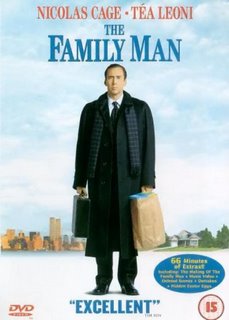


"Some starry night, when her kisses make you tingle, she'll hold you tight, and you'll hate yourself for being single." (The Tender Trap)
"And all at once it seems so nice..." (The Tender Trap)
"These little town blues are melting away; I'm gonna make a brand new start of it - in old New York..." (New York, New York)
"Shimmering clouds - glimmering clouds, in canyons of steel; they're making me feel I'm home. It's autumn in New York that brings the promise of new love..." (Autumn in New York)
A friend living in the U.S. wrote to me recently that the things I write about are removed from the "real world", as he put it. Apparently I need to "reconnect", in reference to Forster I presume. So to idle away time on the bus this afternoon I put together some ideas about New York/Christmas movies. I also consider it my tuppence-worth contribution to the festive season. Sorry it's a little disorganised, I didn't research it that much.
A Very Saccharine Modern Myth
"All cultures have developed a mythology about the heroic quest. The hero feels that there is something missing in his own life or in his society. The old ideas that have nourished his community for generations no longer speak to him. So he leaves home and endures death-defying adventures. He fights monsters, climbs inaccessible mountains, traverses dark forests and, in the process, dies to his old self, and gains a new insight or skill, which he brings back to his people." (Karen Armstrong A Short History of Myth, 2005)
So what do New York films (where the city takes a role akin to a character in the film itself) and Christmas films (at least partly set during Christmas) have in common? Well firstly a certain type of music is a good indication - generally Frank Sinatra or Louis Armstrong. When Harry Met Sally begins with Louis, as does Serendipity; What Women Want is saturated with Frank Sinatra, as is Surviving Christmas.
Generally speaking, the film will show extravagant lifestyles with lots of money being spent. This is often bound into the idea of America as a 'land of opportunity'. Take The Terminal, where Tom Hanks (as Victor Novorski from Krakozia) proves himself with his skills and takes a job as a contractor.
It also helps if there's a love interest of some sort running throughout. Home Alone I and II are the only films that I can recall that defy the pattern. Different kind of love at stake there...
Snow is a good sign, and features prominently - often in conjunction with pictures of ice-skating - in most of the films. A certain type of man may be found, perhaps best embodied in the example of Frank Sinatra. Often, though by no means always, the female lead is an embodiment of this Anne Michaels passage:
"But sometimes the world disrobes, slips its dress off a shoulder,stops time for a beat. If we look up at that moment, it's not due toany ability of ours to pierce the darkness, it's the world's briefbestowal. The catastrophe of grace." (Fugitive Pieces)
I guess that applies to Claire Forlani alone (in Meet Joe Black). Night is also a big player in NY films. Note how Frank's Strangers in the Night is a constant feature in New York films. It even turns up in Kubrick's sort-of-New-York film Eyes Wide Shut.
The following list of films is in chronological order, with comments here and there:
It's a Wonderful Life (1946) is probably the ur-Christmas film,and went on to be remade as The Family Man with Nicholas Cage, surely a contender for the ultimate Xmas/NY film. When Harry Met Sally(1989) ends during the Christmas 'season', with Meg finally getting together with Mr Sadness in the first seconds of the new year. Home Alone I (1990), as I said, is slightly out of place, but Christmas plays a central role. The fact that 'everything turns out well' is another generally vital feature of Xmas films. But, remember Emma Thompson's sadness in Love Actually, Britain's answer to the NY/Xmasfilm...
Gremlins 2: The New Batch (1990) is set in New York, and even has the Gremlins sing a memorable rendition of Frank's New York, New York half-way through. Home Alone II (1992) builds on the success of the original, set in the splendour of a hotel. Sleepless in Seattle (1993) pairs Tom and Meg during the Christmas period. Leon: the Professional (1993) is set in New York, but without the Christmas. Miracle on 34th Street (1997) is a remake of an earlier film. The idea of the 'Christmas miracle' is one particularly cherished by thegenre...
You've Got Mail (1998) returns to the classic combination of Tom and Meg in an update of the usual romance. Great Expectations (1999) once again doesn't feature christmas. Similarly with Meet Joe Black (1999), but the final birthday party for Anthony Hopkins is a Christmas of sorts. Shares many of the main characteristics. Eyes Wide Shut (1999) an oddity within the genre. Bringing Out the Dead (1999) set in NY. Likewise Finding Forrester (2000) with Sean Conneryand Anna Paquin.
The Family Man (2000) with Nicholas Cage is a classic example of the NY/Xmas film. No Sinatra or Armstrong, but a story of a man who needsto 'rediscover' the meaning of Christmas in order to restore some meaning in his life. Modern heroes...
Mel Gibson stars in What Women Want (2000), replete with innuendo and whose soundtrack bursts with Frank et al. A portrait of a "man's man". Kate & Leopold (2001) returns to New York with a time shift. Vanilla Sky (2001) is set in NY. Serendipity (2001) shares the topspot with Family Man, an classic tale of lost loves. Beginning and ending with Louis Armstrong, snow is all around along with the required images of Central Park etc. Use of coldness as a catalyst for romance - often why snow is used in such films.
A.I.: Artificial Intelligence (2001) set in a 'fallen' NY. Autumn inNew York (2001) sees Richard Gere cast in his Pretty Woman guise andwith the fragile Winona Ryder as his love interest. Another good example of a good synthesis of all the key elements. Slight twist to the tale at end.
Coyote Ugly (2001) is just an NY film, slightly out of character. The 25th Hour (2002) as the first 'post 9-11' film is a brooding portrait of the city, and certainly outside the usual type. Anna Paquin proves herself again in this film. Catch Me If You Can (2002) has a NY feel throughout, though doesn't play that long in town. Maid in Manhattan (2002) has the love and the location. Lacking snow and christmas. Panic Room (2002); Phone Booth (2002); Spider-Man (2002); Mr. Deeds(2002); Uptown Girls (2003); Down with Love (2003).
How to Lose a Guy in Ten Days (2003) isn't strictly speaking a Christmas film, but the idea of "frost yourself" lends itself well to the idea. Spider-Man 2 (2004). The Terminal (2004) portrays the 'nice' America: that of Starbucks, Borders, as well as the suggestion that there's a Catherine Zeta Jones around every New York corner. The final release, when Victor gets to "go New York City", is set up almost as a return to the promised land; this is tactfully played against Victor's deep loyalty to the fictional 'Krakozia'.
Melinda and Melinda (2004); 13 Going on 30 (2004); Surviving Christmas(2004) with Ben Affleck as the bored executive trying to find meaning in his life by hiring a family to resurrect feelings of Christmas spirit. Happily-ever-after of course. Hitch (2005) is the most recent example of the New York movie, though without the Christmas.
I want to suggest that many of these presentations of "moonlight and music and love and romance" (Let's Face the Music and Dance) form a mythology of sorts. That of the search for meaning. That of the hero.
Tuesday, December 13, 2005
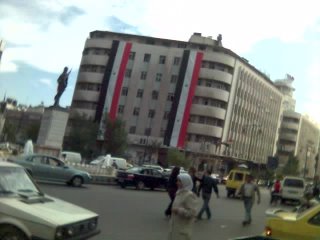


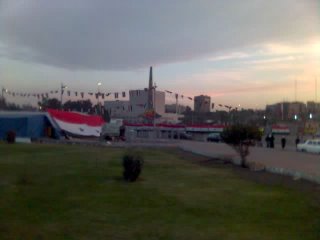

In what is manifestly the wrong time to be leaving Syria, I depart for Tehran tomorrow evening. For those out of the loop, a little background.
Lebanon: Explosion on February 14th 2005 killed former Lebanese Prime Minister Rafiq Hariri as well as 22 others. UN sets up team to investigate. One report published soon after ("the Fitzgerald Report"), followed by another ("the Mehlis report [pt.1]") on 19th October, soon to be followed by the final installment on December 15th. In the interim period, Syrian troops were essentially forced out of the country on account of a popular movement (peaceful in nature) as well as strong international pressure in the wake of the Hariri bombing. There have been assassinations and killings of anti-Syrian journalists (most notably yesterday morning Gibran Tueni, MP and editor of Al-Nahar newspaper, died in a car-bomb) as well as sporadic bombs in Christian quarters of Beirut. There is a strong anti-Syrian feeling within Lebanon.
Syria: As part of the 'axis of evil', Syria faces strong pressure to issue wide-ranging reforms in order to 'give democracy and freedom' to her people. Resisting such designs on Syria and alleged US plans of regime change by force, Bashar al-Assad has decided to take a stand in the face of mounting international pressure. A senior intelligence officer who was stationed in Lebanon during the civil war, Ghazi Kenaan, allegedly committed suicide recently too. Syria remains accused of playing a significant role in the Hariri bombing, and it is expected that the upcoming report on Thursday will come down heavily upon Syria.
[from a report by Al-Nahar: "They said the report will include three main elements: Strong evidence that Syria has been uncooperative, thus violating its commitments and pledges; a recommendation for the questioning of Syrian and Lebanese officers and politicians; and the creation of an international court to try suspects in the Hariri murder.
Quoting a diplomatic document, senior U.S. diplomats, said that as a consequence to the Syrian stance, the Security Council might impose sanctions on Syrian officials: the president, members of the Syrian Parliament, the prime minister, the defense minister and the foreign minister. Under the sanctions, Security Council member states will be prohibited from hosting these officials and their assets will be frozen."]
On November 10th, Bashar al-Assad made a speech at the University of Damascus, in which he laid out a systematic answer to many of the international "grievances". As a rallying cry to the country, it was a strange speech to listen to. Designed to appeal to the young, and with many odd academic and scientific metaphors (including one referring to cell metabolism), the speech covered the whole gamut of issues facing Syria, even taking time out to allege that Arafat was poisoned in Palestine by Israeli agents. The speech similarly set up Syria as victims, a sentiment that is much present within ordinary Syrians. "It is only natural that they should blame Syria," he said. On Iraq and the issues facing the neighbor country: "Ultimately, no one will stand by Iraq except its Arab sister states". The speech made much of traditional pan-Arab links, to which I guess he sought to appeal. There were expressions of friendship to "sister Lebanon". A story of the rape of a family is told. Shall we let this happen to Syria, he asked? "If there are mistakes in the state, we all discuss them at home, but we will not allow anybody to talk about them from the outside." After all, as he stated, "social cohesion is increasing". He listed a series of reforming measures that he had initiated.
At any rate, since then we've had the allegations that Hariri's son (Sa'ad, in Beirut) had offered money to a Syrian to falsely testify to the UN Mehlis comission. This was revealed in a press conference and TV interview held in Damascus two weeks ago. Also notable was that this claim was immediately taken as fact by many Syrians, thus "discrediting the sham of the Mehlis investigation" as one friend put it. Also you may have read of the deaths of several "terrorists" north of Damascus near Aleppo. These reports of SANA [The Syrian Arab News Network], which make their way onto BBC News seemingly without confirmation, are obviously useful for the Syrian regime, allowing it to boast that it too has a problem with 'terrorists' within Syria. It has since been claimed that the attacks in the north were by Syrian forces on offices of a political opposition movement. Al Seyassah, Kuwait, claimed in the same report via a source in Paris that Aleppo is due to become 'the new Hama', and that often these attacks on 'terrorists' were simply operations against political or religious bases of opposition (such as the Ikhwaan el-muslimiin, the Muslim Brotherhood, who offer the most serious opposition to the current regime).
Journalists covering Damascus do so from the comfy vantage-point of Beirut to the obvious detriment of that same coverage. There have been several confirmed reports of US nationals (uni students reading Arabic at AUB, the American University of Beirut) being refused entry on the border between Lebanon and Syria. I myself, to clarify in Syria's defence, have seen Americans obtaining visas without problem at the border on each of the 3 times I returned from Lebanon in the last month.
As you can see from the photos, banners and flags have been draped over many parts of Damascus. Slogans are printed across them: "God will protect you, Syria!", and "Resistance and Islam", as well as "We condemn trading in Al-Hariri blood!" (pictured). A small graffiti has had the good fortune to remain on the stairs of a Syrian national monument up in Muhajerine: "Fuck You U.S.A.".
Demonstrations happen often, either of the official kind or the spontaneous lets-get-together-after-work-and-walk-in-the-streets-of-damascus-and-show-our-conviction kind. One of the mobile networks, with connections to the regime's leadership, sends out txt messages (in Arabic) letting people know when and where the big demonstrations will be. University students, as well as the large masse of state employees are 'encouraged' to attend these rallies.
The reaction 'on the street' varies quite a lot. Iraqi refugees living in Damascus are understandably more concerned with the elections taking place in their country on the same day as the release of the Mehlis report to the public (it has already been submitted in secret to the UN). However, they realise the singular importance of the upcoming Mehlis report (pursuant to UN Security Council resolution 1595 (2005)). Taxi drivers don't seem to give a shit really, no matter what you ask them. They're too busy working two or three jobs just to make ends meet. I can't bear to imagine the damage that a serious round of newly-imposed sanctions would inflict on ordinary Syrians.
At any rate, I'll be in smog-paradise, or Tehran, from Wednesday. I finished rereading John Gray's Al Qaeda and what it means to be modern and started, with much glee, Karen Armstrong's A Short History of Myth. For those of you looking for a good book on recent-ish Syrian politics etc, check out Neither Bread Nor Freedom by Alan George, an excellent primer on the post-Hafez al-Assad period...
Saturday, December 03, 2005

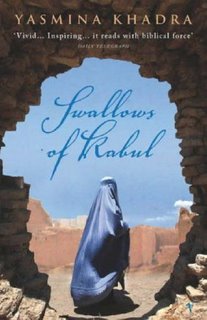

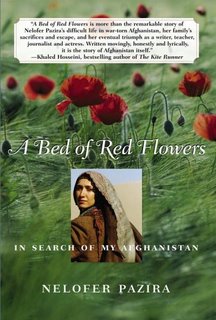

Books read Oct 1st-Dec 1st:
The Ministry of Pain - Dubravka Ugresic
Brief Interviews with Hideous Men - David Foster Wallace
Frontline - David Loyn
A Bed of Red Flowers - Nelofer Pazira
The Great War for Civilisation - Robert Fisk
Never Let Me Go - Kazuo Ishiguro
On Identity - Amin Maalouf
Thank You For Not Reading - Dubravka Ugresic
Anil's Ghost - Michael Ondaatje (reread)
A Sunday at the Pool in Kigali - Giles Courtemanche (reread)
Chechnya: To the Heart of the Conflict - Andrew Meier
Baghdad Bulletin - David Enders
A Hundred And One Days - Asne Seierstad
The Wars against Saddam - John Simpson
Iraq in a Nutshell - Amy Roraback
War Junkie - Jon Steele
HP Lovecraft: Against the World, Against Life - Michel Houellebecq
The Storyteller's Daughter - Saira Shah
The Swallows of Kabul - Yasmina Khadra
Taliban - Ahmed Rashid (reread)
Al-Qaeda - Jason Burke (reread)
The Carpet Wars - Christopher Kremmer
Platform - Michel Houellebecq
Books going with me to Afghanistan/Iran:
Shadows of the Sun - Ryszard Kapuscinski
The Death of Ivan Illych - Leo Tolstoy
Hadji Murat - Leo Tolstoy
Gulag: a history - Anne Applebaum
A Writer at War - Vasily Grossman
Taliban - Ahmed Rashid
Arabic short stories - compilation (in Arabic)
Sa'adi - Gulistan (in Farsi)
